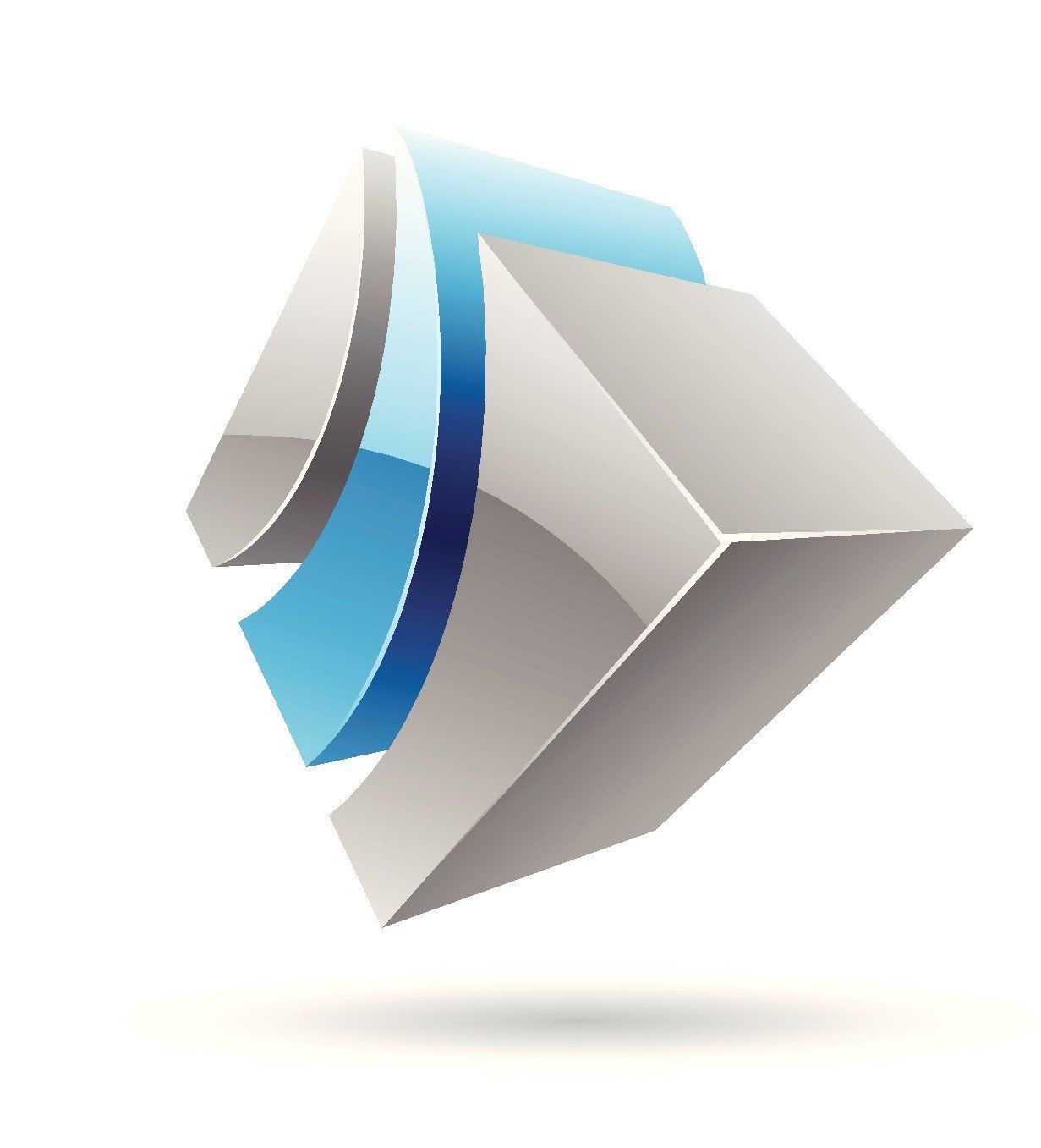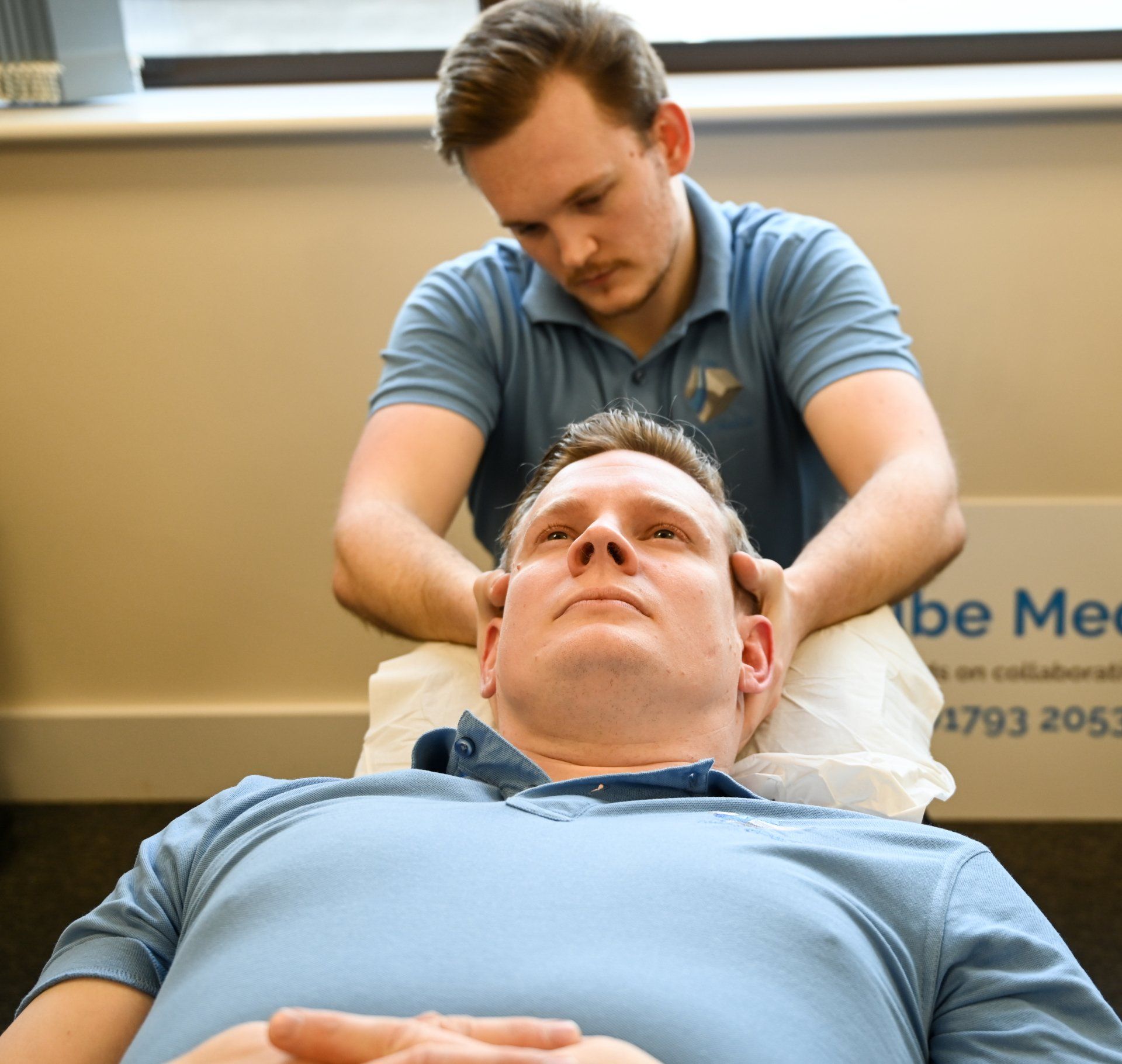Osteopathy in Swindon
How can Osteopathy at Kube Medical help you?
Can Osteopathy help me?
- Pain caused by arthritis
- Problems with the circulatory system
- Cramps
- Digestive issues
- Fibromyalgia
- Shoulder and elbow pain (lateral epicondylitis) caused by musculoskeletal conditions of the back and neck
- Headaches related to neck issues (cervicogenic)
- Joint pains
- Backache and back pain, including general, acute and chronic conditions.
- Generalised aches and pains
- Lumbago
- Prevention of migraines
- Sports injuries
- Muscle spasms
- Neuralgia
- Tension and inability to relax
- Rheumatic pain
- Sciatic pain
- Mechanical neck pain
What is Osteopathy?
Osteopathy is a form of healthcare which focuses on the relationship between the musculoskeletal system and the overall health of the patient. Osteopathy can be used to assess, treat and prevent a wide range of musculoskeletal issues. This is done through assisting the body to return to its normal function, and supporting the natural ability of the human body to heal itself. Techniques include stretching, movement, deep tissue massage and manipulation of muscles and joints to restore function.
Osteopathy is a regulated profession, meaning that anyone calling themselves an Osteopath must be registered with the General Osteopathy Council (GOsC), and have completed a degree course that is typically four or five years long. Osteopaths maintain their professional standing through completion of Continuing Professional Development (CPD), which refreshes and enhances their technical skills.
What are the principles of Osteopathy?
The fundamental belief of an Osteopath is that, through active and passive movement, MSK pain and reduced function can be improved. This includes the encouragement of blood flow and nerve conduction through the reduction of muscle tension, brought about by daily stresses, both physical and emotional. This reduction in muscle tone, in theory, increases the flow of fluids such as blood which supplies the surrounding tissues with vital nourishment. Poor blood flow to muscles is known as ischaemia. It is thought to be one cause of chronic pain in those who have no obvious damage to their body, such as a muscle tear.
Osteopathy also focuses on the patient's individual lifestyle factors. These may impact them through limiting recovery from a specific injury or as a factor in the development of an injury. Unfortunately, like most things in life, Osteopathy is not a magic pill. The benefits of manual therapy alone are often short lived. If individual lifestyle factors are not addressed during treatment, you may not get as much out of your treatment. It is important to be as open and honest with your Osteopath during your sessions. This allows them to support you through your transition from chronic pain to a state of being pain free.
What is Cranial Osteopathy?
Cranial Osteopathy is a distinct section of Osteopathy that focuses on the anatomy and physiology of the head. Using the same techniques as Osteopathy, these are applied more subtly, focused on the head. As a result, the patient experience can be quite different to a conventional Osteopathy appointment.
What do Osteopathy and Cranial Osteopathy treatments feel like?
It really depends on your issue and how it is affecting you, and the techniques your practitioner uses to address them. An Osteopathy appointment will often include stretching and massage, which can first feel uncomfortable before the muscles start to relax. Manipulation of joints is also used, which can lead to the audible “pop” that some people associate with Osteopath appointments. As the purpose of this is to restore joint function, it can lead to reduced pain and improved comfort.
By contrast, the subtlety of Cranial Osteopathy means that patients are less likely to feel changes during the appointment. It is a much more relaxing and gentle experience.
If you are feeling nervous about your treatment, talk to your practitioner. They will guide you through the treatment and put you at ease.
How do I choose who to see?
As a multidisciplinary clinic, Kube Medical has multiple practitioners operating as a team. The team undergoes frequent training sessions to understand how to work alongside one another effectively, and regularly refer patients to the practitioner that is best suited to their unique circumstances. You can be confident that whichever practitioner you come to see, you will benefit from the wealth of experience and expertise within the clinic.
Can I use insurance to cover Osteopathy treatment at Kube Medical?
We work directly with many insurers, including AXA, Vitality, Aviva, Bupa and WPA. When booking, please let us know you will be using insurance, and provide us with a claim or pre-authorisation number for your treatment.
Many insurers will also allow their policyholders to pay for treatment directly to us, then make a claim using receipts. It's always best to check this with your insurer first.
If you need advice on which practitioners are registered to treat patients for your insurer, please contact us.
Can I see an NHS Osteopath?
While Osteopathy is available on the NHS in some areas, Osteopathy is not universally available as an NHS treatment option. By contrast, Kube Medical is a private clinic, meaning you do not need to be referred to us for treatment. You can arrange an appointment with us directly.
For more information about options for treatment by an NHS Osteopath, speak to your GP.


